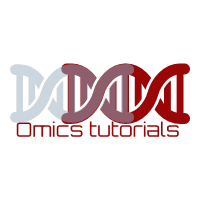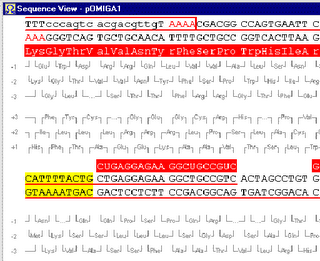
Designing primer through computational approach
March 29, 2007A good primer should usually meet the following criteria
1. Primers should be 18-38 bases in length;
2. Base composition should be 50-60% (G+C);
3. Primers should end (3′) in a G or C, or CG or GC: this prevents “breathing” of ends and increases efficiency of priming;
4. Melting temperature(Tms) between 55-80degrees Celsius are preferred;
5. 3′-ends of primers should not be complementary (ie. base pair), as otherwise primer dimers will be synthesised preferentially to any other product;
6. Primer self-complementarity should be avoided;
7. Runs of three or more Cs or Gs at the 3′-ends of primers may promote mispriming at G or C-rich sequences (because of stability of annealing), and should be avoided.
(adapted from Innis and Gelfand,1991)
Steps to follow to while designing a Primer through insilico approach:
1.Calculating Properties of an Oligonucleotide
2.Finding All Potential Forward Primers
3.Finding All Potential Reverse Primers
4.Filtering Primers Based on GC Content
5.Filtering Primers Based on Their Melting Temperature
6.Filtering out the Primers With Self-Dimerization and Hairpin Formation
Self-dimerization and hairpin formation can prevent the primer from binding to the target sequence.
7.Filtering out Primers Without a GC Clamp
A strong base pairing at the 3′ end of the primer helps in PCR. Find all the primers that do not end in a G or C.
8.Filtering out Primers With Nucleotide Repeats
Primers that have stretches of repeated nucleotides can give poor PCR results.
9.Find the Primers That Satisfy All the Criteria
10.Checking For Cross Dimerization
Cross dimerization can occur between the forward and reverse primer if they have a significant amount of complementarity. The primers will not function properly if they dimerize with each other. To check for dimerization, align every forward primer against every reverse dimer.
11.Visualizing Potential Pairs of Primers in the Sequence Domain
An alternative way to present this information is to look at all potential combinations of primers in the sequence domain. Each dot in the plot represents a possible combination between the forward and reverse primers after filtering out all those cases with potential cross dimerization.
11.Find Restriction Enzymes That Cut Inside the Primer
Finding the restriction enzymes from the REBASE database that will cut a primer. These restriction enzymes can be used in the design of cloning experiments. For example, you can use this on the first pair of primers from the list of possible primers that you just calculated.
PCR primers based upon protein sequence:
If you have the protein sequence and want the DNA sequence, we can reverse translate a protein using reverse translate tools
(i) Reverse translate a protein:
http://arbl.cvmbs.colostate.edu
(ii) Back translation tool: We can enter sequence motifs which will be included in or excluded from resulting optimal sequence
http://www.entelechon.com/
For changing a specific amino acid
(i) Reverse translator: http://www.ebi.ac.uk/
useful online tools for PCR design:
1.Manipulating the sequence
http://www.vivo.colostate.edu/
2.Analysing oligonucleotide properties (calculating GC content, molecular weight, melting temperature)
http://www.idtdna.com/analyzer
3.For dimer check, hairpin check, 5’GC content check, 3’GC content check
Primer design assistant: http://dbb.nhri.org.tw/primer/
4.Visualizing Potential Pairs of Primers
dotplot: http://myhits.isb-sib.ch/cgi-bin/dotlet
5. For restriction analysis
REBsites: http://tools.neb.com/REBsites/index.php3
Online PCR design suite:
1.Primer3
2.Interactive primer design
3.PCR Now
Free software tools:
1. Download Fast PCR (for windows)
















